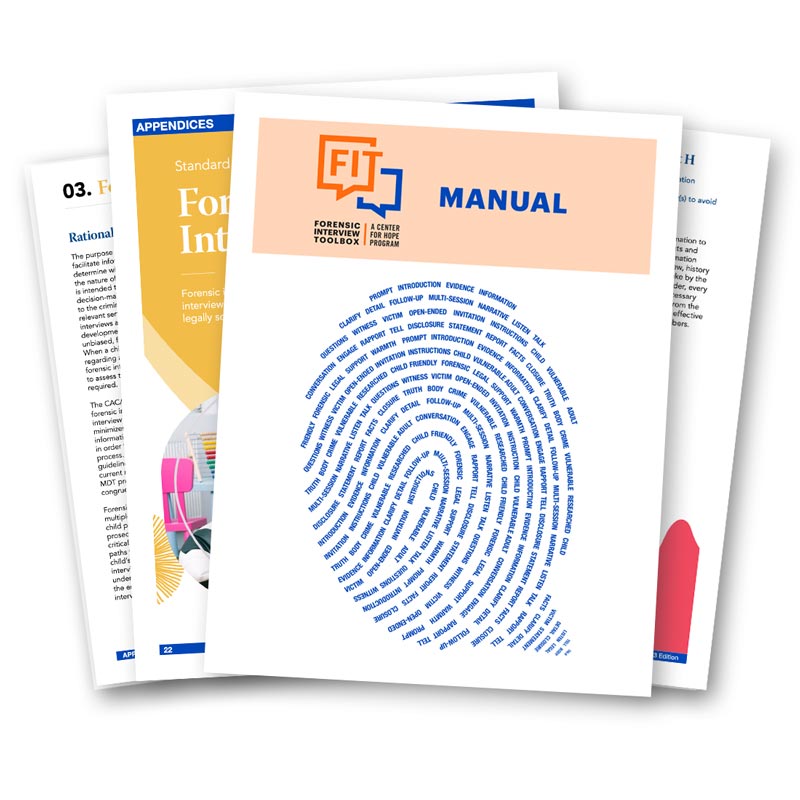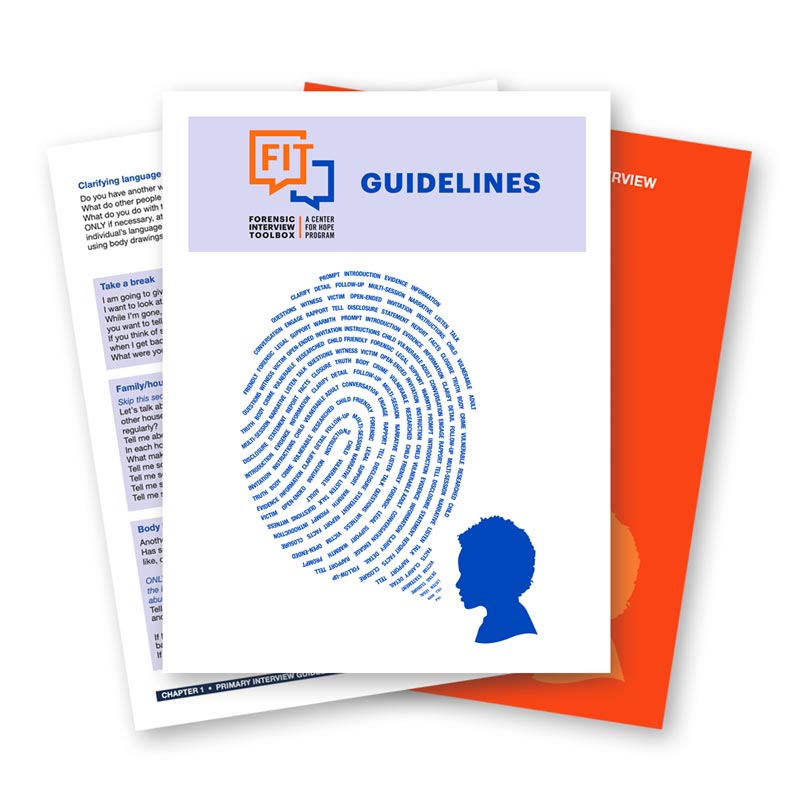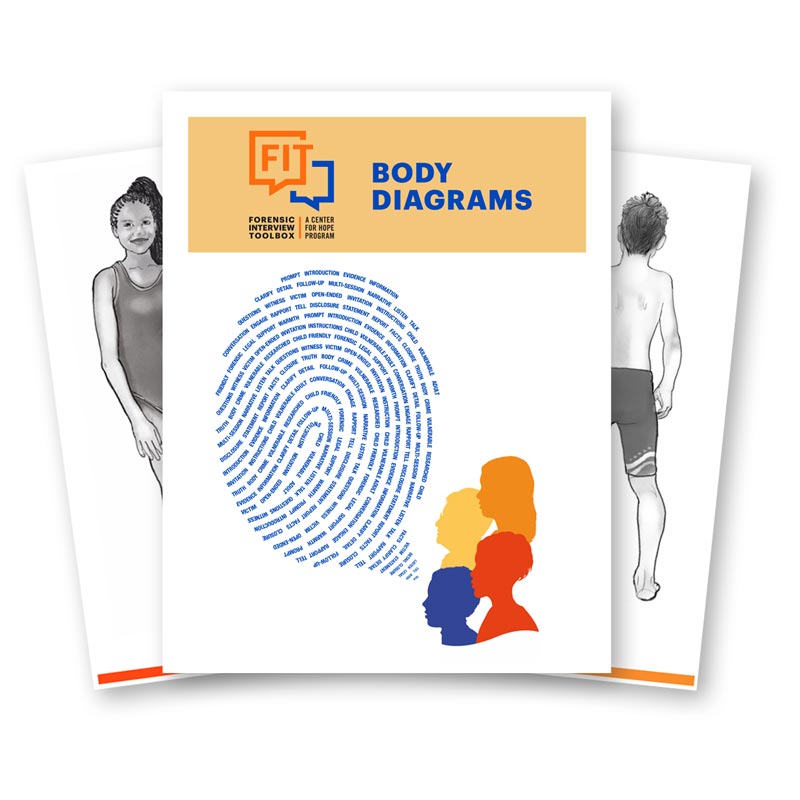About the Forensic Interview Toolbox (FIT)
The Forensic Interview Toolbox (FIT) is structured to help interviewers understand and access all the best practice methods available in the field of forensic interviewing with children and vulnerable adults. Expanded research in the field allows interviewers to refer to a wide range of best practice methods to obtain both accurate and complete narratives from witnesses and victims. Previously, adherence to a specific interview protocol was prudent; today interviewers are being encouraged to familiarize themselves with ongoing research, a variety of interview approaches and best practice guidelines, the basis for FIT.
The FIT interview technique is used with a suspected victim/witness central to a crime and with witnesses on the periphery of alleged incidents. FIT can also be used to interview individuals (siblings or other household members) exposed to alleged suspects. FIT is a flexible, semi-scripted, phased approach offering a range of choices at every stage of the interview while emphasizing methods supported by research. With the understanding that every individual and every community has differing needs for the interview, a “one-protocol-fits-all” approach may not be suitable. FIT offers many options but is not exhaustive. Interviewers may choose other questions instead. FIT helps interviewers understand best practices to inform and explain their choices. As best practices dictate, FIT focuses on the use of open-ended invitations for transition statements and within each phase. A range of more focused questions are used with caution where open-ended prompts are unsuccessful.
FIT is appropriate for the novice or experienced. It was created for dedicated forensic interviewers, and for those who conduct interviews as part of an investigatory role such as Multi-Disciplinary Team (MDT) members in law enforcement, legal, education, or adult and child protection fields. FIT is designed for those who conduct forensic interviews and for those who observe them. FIT interviewing is not dispositive, as it is not intended to prove or disprove allegations. FIT is a tool to obtain complete narrative responses from individuals by which investigators can proceed their inquiry and make determinations.
FIT Training
This NCA accredited 35-hour training includes comprehensive instruction on the Forensic Interview Toolbox (FIT), forensic interview protocol. Participants will learn best practices for questioning children and vulnerable adults (elder abuse and adults with disabilities). Practice interviews and mock trials will enhance learning along with content experts from legal, elder justice and interview research. Upon graduating from the FIT course you will have access to free annual peer review.
Topics Covered:
Current forensic interview research, question types, tele-forensic interviewing, child development, use of media/evidence, memory & suggestibility, interviewing with cultural competence, and dynamics of abuse and use of body diagrams for clarification.
What’s In The Toolbox?
The FIT materials are included with every FIT training and include three books.

FIT Manual
The first book, the FIT Manual, has background and explanation for techniques used in the interview process, FIT peer review form, FIT overview and NCA Forensic Interview Standards.

FIT Guidelines
The second book, the FIT Guidelines, contains interview question prompts and structure of the model. The guidelines book is divided into sections (including tabs on the side). Each section has questioning approaches related to allegations and topic. Interviewers find the guidelines especially helpful prior to and during the forensic interview for reference.

FIT Body Diagrams
The third book, the Body Diagram book contains illustrations representing individuals across all age groups from four races/ethnicities (African American, Caucasian, Latino and Asian). Five additional illustrations (gender expansive) are provided that broaden our cultural depiction of gender identity and gender expression.